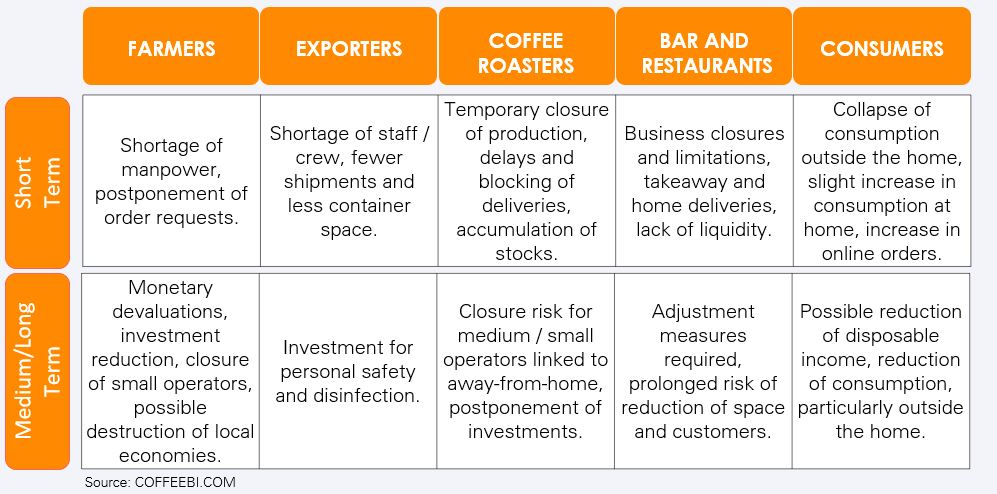Covid-19: Impact of the Pandemic on Coffee Consumption (Part 2)
In an increasing number of countries, the pandemic has led to restrictive containment measures that have involved the closure of industries and commercial activities, restrictions on people’s freedom of movement, rules of social distancing and incentives for remote-working.
The main effect in the short-term has been the collapse of away-from-home consumption and an initial increase in purchases through supermarkets and online to stockpile products.

The closing of bars, restaurants and other commercial operators has caused the consumption of coffee away-from-home to collapse. The same trend was recorded in office consumption and consumption via vending machines.
Drinking coffee in the bar or office has been partially replaced by coffee consumption at home. For many remote-workers, the coffee break has become “household” and the moments of consumption take place within the home. Some have tried to reproduce the away-from-home quality of coffee through online orders of selected blends and the use of espresso machines.
After an initial slowdown in the consumption of small appliances for fear of late deliveries due to the priority given to basic necessities, there was a generalized increase in requests for devices for personal care, cooking and health. Some data indicate strong growth in online purchases of coffee machines and capsules.
In some countries, businesses have been able to remain open, selling takeaway food only.
Coffee shops have opted to sell takeaway coffee, whilst those who were already equipped, such as the big chains, have enhanced the home delivery of coffee or breakfasts. However, the first data show heavy losses for everyone.
In the medium- and long-term, the greatest risk is an impact on the general demand for coffee due to a global recession triggered directly and indirectly by the pandemic.
Reduced household incomes could translate into reduced consumption, resulting in reduced demand for coffee. In addition, price-sensitive consumers could replace higher value coffee with cheaper blends, brands or solutions.
However, the elasticity of coffee demand is likely to be limited, especially in the main markets with high per capita consumption rates. The effect of the reduction in consumption will have a greater impact on the away-from-home consumption.
Further concerns stem from the prolonged closure of activities unable to economically withstand this situation and the subsequent partial reopening with reduced space and fewer customers.
Some trade associations report heavy losses from their associates due to prolonged closure. They foresee difficulties even after reopening due reduced numbers of customers and the stringent rules of social distancing often incompatible with the size of their premises.
Read also Part 1: Impact of the Pandemic on the Coffee Production Chain
Read also Part 3: Impact of the Pandemic on the Coffee Sector. Future Changes and Innovations




